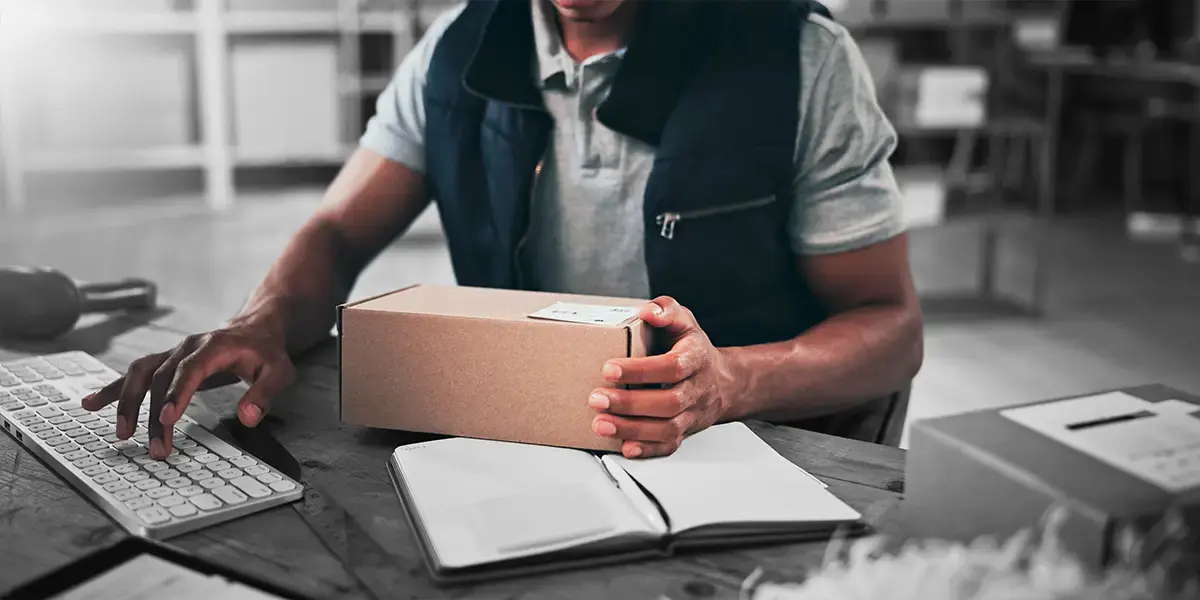
Last update: 07.08.2025
In this blog:
Intro- The power of free returns
- Friction-free social commerce
- Home pickups
- Contactless returns
- Sustainability
- Artificial intelligence
- In-store returns
- Quick refunds
- Digital processes
Intro
More than 30% of all online purchases end up as returns. And, more than half of all retailers say that dealing with returns has a negative impact on the day-to-day business operations.
To add to the frustration, consumers focus on the return process — such as checking if you offer free returns. If you don’t, chances are they’ll move on to another retailer, with over half of all online shoppers ready to switch if you charge for a return. Here are some returns management trends for the future to meet ever-changing expectations.
1. The power of free returns
Offering free returns to customers should and will be a trend every year. 47% of online shoppers say they will look to make a purchase elsewhere if they have to pay to make a return. That’s almost half of all of your potential customers.
Although, this number can vary depending on your industry and products, as with most things in retail.
But, if we focus on sales numbers rather than the cost of a return, a study published in the Journal of Marketing shows online stores offering free returns see customers spend up to 357% more than they did initiate the return.
However, you need to look at the value your customers bring in and compare it to the cost of a return. To overcome this problem, you can:
- Offer free returns to your customers
- Charge for returns but make exchanges free of charge
- Only charge if the return’s monetary value is less than a figure of your choosing
Plus, you can always set different rules for different markets, segments or product groups.
2. Friction-free social commerce
Social commerce is when you sell products on social media. You’ll see this on platforms like Facebook and Instagram where users can find a product, read more information and checkout without ever leaving the platform.
Social commerce is also growing more popular each year as it speeds up the entire sales process by skipping a bunch of steps along the way, making the purchase friction-free. It’s also the go-to choice for customers because it’s where their favorite influencers advertise products.
Social commerce is on the rise every year. Customers love the simplicity and ease of use as they can interact with their favorite brands seamlessly.
Although social commerce doesn’t have a direct correlation with returns management, it can impact your returns. If shoppers can purchase your products easily, they expect the returns process to be just as painless.
3. Home pickups
Many businesses were forced to close their physical stores, but many innovated and quickly pivoted into offering different services. In-store returns are free and easy but expect the home pickup trend to become the norm.
With this return method, customers don’t have to leave their homes to make the return. They just need to pack their items, print their own shipping labels, select a date for the package then wait for the shipping company to collect it. Easy!
4. Self-service and contactless
Similar to the last returns management trend, consumers will expect more self-service and contactless options where they feel safe and comfortable. You can expect blocks of lockers in public places to quickly become a trend, which will function as big parcel pick-up and drop-off hubs.
This method lets shoppers receive and return their packages by visiting lockers with a designated code whenever suits them best — perfect for customers with busy lifestyles.
These secure, self-service kiosks are open all the time and there’s no waiting in line. Customers simply need to book a locker or kiosk, receive a code and drop off their package in the relevant location. While this does cost retailers money, it does improve the customer experience.
As a result, you create more loyal shoppers.
5. Sustainability
Sustainability isn’t a trend. It’s serious and something we all need to talk more openly about. It’s also something customers want and are willing to pay for.
The first thing to do is improve the return rate, such as optimizing product descriptions, size guides and adding environmentally friendly shipping options. But sometimes, it’s cheaper to let customers keep a defective item for a refund, rather than having it sent back, restored and resold at a discount price.
This isn’t good for the environment. Two returns management trends to focus on in the future are packaging and refurbishment. Here’s why.
Sustainable packaging
Customers don’t want pieces of unnecessary cardboard and plastic in their packaging. Plastics can take over 100 years to decompose, so don’t continue adding to the problem. There are newer innovations that are kinder to our planet all made from natural materials, such as:
- Mushroom root
- Bagasse
- Seaweed packaging
- Biodegradable plastics
- Cornstarch
While these may be more costly, they'll resonate with your customers.
Refurbish and repurpose
Another trend to be aware of is refurbishment and repurposing. This is an excellent trend to get involved in, as it lessens the impact of fast fashion, ultimately helping the environment.
Let’s use jeans as an example. Behind a pair of jeans is water consumption equaling to around 7,600 liters (or 2,000 gallons). Even by using recycled water, this is a lot of water consumption and a lot of work, all for one pair of jeans someone might wear once or twice.
Instead, you can re-use fibers and materials and repurpose a clothing item into something else, such as repurposing jeans into a jacket. This is the more sustainable and also cheaper option.
6. Artificial intelligence
Artificial intelligence (AI) is only going to become more important in returns management — but only when retailers get to grips with technology and are ready to transform their returns management processes.
AI and automation will help you regain control of your returns with minimal effort and time required. With AI, you can reduce touchpoints and positively impact your bottom line.
You can set up smart business rules and let the system do the work for you. Or, you can add a chatbot to your website without needing a human to manage the returns process. Customers can interact with the chatbot, get the information they need and complete the returns process, allowing you to focus on revenue-driving activities.
7. In-store returns
In-store returns aren’t new. While it’s a great way to minimize the cost of returns and make it easy for customers, you can still be innovative to make the in-store method a worthy trend.
Offering in-store returns for online purchases meets the need for speed, tracking, flexibility, and automation of alerts to your customer. When customers return products in-store, they’re in control. As you empower them, the responsibility is on the company to ship items to distribution or adding products to inventory.
Also look out for no-box drop off in-store return methods. Some locations are quietly beginning to accept returns in-store, but without customers packaging the items and printing a leave. This innovative in-store return method can be free to customers and the simplicity of it can build loyalty.
8. Quick refunds
Customers have to pay for an item and then wait a few days for the packages to arrive (depending on the shipping method). But when customers want to return an item, they’re asked to wait for weeks or months for the refund to arrive.
This isn’t a great customer experience.
Another returns management trend will be to automate the refund process and allow customers to get their money back as quickly as they spent it. You can set up the triggers yourself as to when a refund can be given, whether it’s when they hand it to a carrier or when customer service approves the refund.
Why not go one step further? Make it even quicker and offer returnless returns in the form of partial refunds, allowing customers to get their items repaired. Patience is getting shorter and customers want quick refunds. Give it to them.
9. Digital processes
Nothing causes a bigger headache than a handwritten return slip nobody can decipher. Believe it or not, there’s a way you can remove this entirely from your returns process. In fact, it’s possible to just scan a barcode, open the package to control the item, click ‘approve’ and move on to the next package.
A returns management trend to focus on is digitizing your returns process. Returns management systems have been around the past decade, but many retailers have only focused on the return as a source of new income and have missed the opportunity to reconvert returns to new purchases.
Returns do cause headaches in ecommerce, but by using a system, customers can register returns digitally. Here, you can offer your customers product exchanges or a refund. Even our own data shows more than 30% of all returns are reconverted to new purchases at this stage. This is new revenue for your business that would have been lost.
The time your teams spend on decrease can finally reduce, while your customers enjoy automated updates throughout the process.
The goal is to give the customers what they want, while your business stays on track and evolves around the new trends coming up in the market. Sustainability, control, contactless returns — all of this builds loyalty, so find the balance that fits your business best.
Make returns simple for your customers & smarter for you
nShift Returns delivers branded, self-service experiences while giving you the tools to prevent avoidable returns, automate refunds, and restock faster.
Discover more
Further reading: Returns management trends FAQs
What are the key technology trends in returns management?
AI and automation are revolutionizing returns—enabling predictive analytics, smart routing, automated label generation, fraud detection, robotics in sorting, and eco-conscious processing.
How is sustainability influencing returns strategies?
Retailers are embracing circular practices—refurbishing and reselling returns, utilizing green packaging, and offering donation or recycling options to reduce waste and appeal to eco-aware customers.
How can stores enhance the return experience?
Self-service returns, intuitive apps, real-time tracking, multiple drop-off options, and personalized return rules deliver convenience and build trust.
What role does data analytics play in returns optimization?
Return data helps identify product faults, optimize listings, forecast return volumes, and refine reverse logistics to recover up to 65% of the value of returned goods.
How is AI shaping the future of returns in e-commerce?
AI is transitioning toward preventive use—predicting return risk at checkout, suggesting alternate products, detecting fraud, and guiding product recommendations to lower return rates.
Why are retailers exploring returnless refunds?
Returnless refunds—refunding without requiring item return—are emerging for low-cost or low-resale products, reducing logistics costs and friction.

About the author
Jyo Saikia
Product Specialist Director, nShift
With extensive experience in logistics, supply chain, and IT SaaS, Jyo specializes in helping businesses optimize operations and achieve sustained success. His deep industry knowledge enables him to craft innovative strategies that deliver tangible results, ensuring customers gain a competitive edge.




